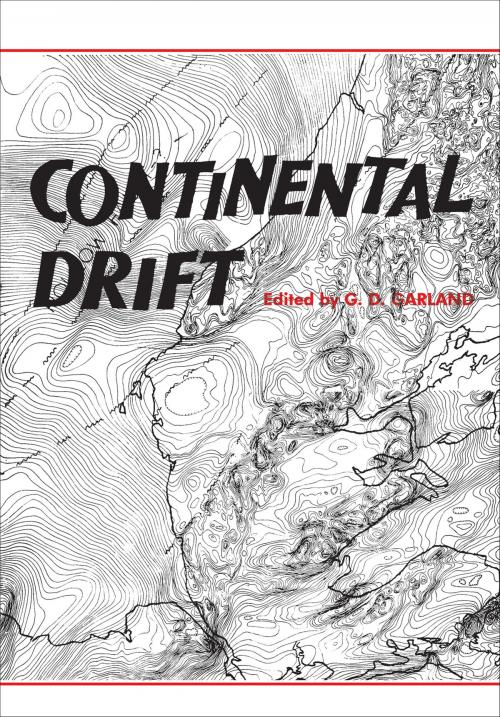| Author: | ISBN: | 9781487597382 | |
| Publisher: | University of Toronto Press, Scholarly Publishing Division | Publication: | December 15, 1966 |
| Imprint: | Language: | English |
| Author: | |
| ISBN: | 9781487597382 |
| Publisher: | University of Toronto Press, Scholarly Publishing Division |
| Publication: | December 15, 1966 |
| Imprint: | |
| Language: | English |
The possibility that the continents of the earth have undergone major changes in position during the earth's history has fascinated scholars for at least three hundred years. Recently, evidence from several scientific disciplines has shown that the possibility must be very seriously considered in any study of the surface features of the earth.
The first part of this volume consists of papers given at a symposium on continental drift, held at the annual meeting of the Royal Society of Canada in Charlottetown in June 1964. They present the views of three geophysicists, a botanist, and an astronomer. In these papers, the present evidence for or against continental drift is reviewed and the authors in most cases draw their own conclusions. The reader will find that there is not unanimous agreement in favour of drift.
Nearly all discussions of continental drift stress the possible separation of the Americas from Europe and Africa. Considerable work has been done on the tracing of structures, on each side of the Atlantic Ocean, which might once have been connected. Geologists and geophysicists working in the Arctic or on the eastern seaboard of Canada have an important contribution to make to this subject. The second part of this volume, therefore, consists of a group of papers, also presented at the Charlottetown meeting, which throw light on the complicated crustal structure of these regions. In any attempt to reconstruct North America as part of Europe the features described in these papers will have to be taken into account. Once again, the reader will find differences of opinion on the question of whether the evidence favours a separation of our continent from Europe. Indeed, it is because the theory of continental drift us so difficult to confirm without ambiguity by direct observation that it remains controversial but exciting.
The possibility that the continents of the earth have undergone major changes in position during the earth's history has fascinated scholars for at least three hundred years. Recently, evidence from several scientific disciplines has shown that the possibility must be very seriously considered in any study of the surface features of the earth.
The first part of this volume consists of papers given at a symposium on continental drift, held at the annual meeting of the Royal Society of Canada in Charlottetown in June 1964. They present the views of three geophysicists, a botanist, and an astronomer. In these papers, the present evidence for or against continental drift is reviewed and the authors in most cases draw their own conclusions. The reader will find that there is not unanimous agreement in favour of drift.
Nearly all discussions of continental drift stress the possible separation of the Americas from Europe and Africa. Considerable work has been done on the tracing of structures, on each side of the Atlantic Ocean, which might once have been connected. Geologists and geophysicists working in the Arctic or on the eastern seaboard of Canada have an important contribution to make to this subject. The second part of this volume, therefore, consists of a group of papers, also presented at the Charlottetown meeting, which throw light on the complicated crustal structure of these regions. In any attempt to reconstruct North America as part of Europe the features described in these papers will have to be taken into account. Once again, the reader will find differences of opinion on the question of whether the evidence favours a separation of our continent from Europe. Indeed, it is because the theory of continental drift us so difficult to confirm without ambiguity by direct observation that it remains controversial but exciting.















